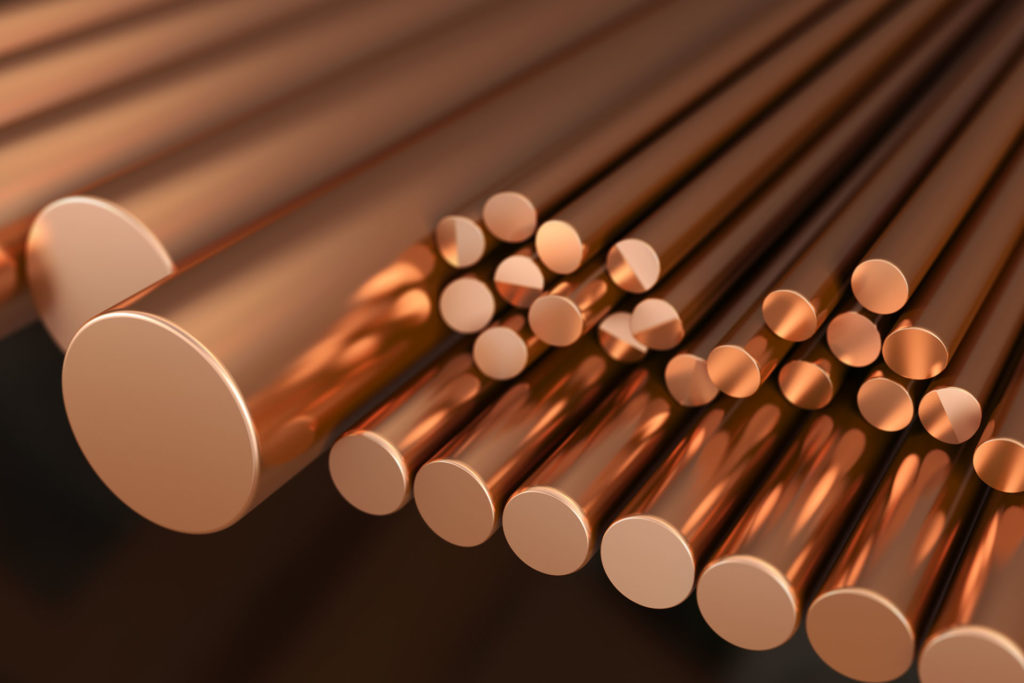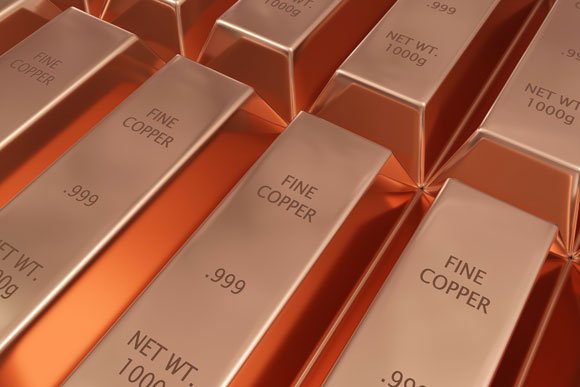Posted 27 April 2022
The advent of the pandemic has led to huge copper price rises, with, naturally, implications for copper cable and wire pricing. Here, we look at this situation, what is likely to happen, and how you as a cable buyer can plan accordingly.
 In about 8700 BC, a copper pendant was discovered in what is now Northern Iraq – and, for nearly the next five millennia, copper remained as the only metal known to man. It was accordingly used in all metal applications.
In about 8700 BC, a copper pendant was discovered in what is now Northern Iraq – and, for nearly the next five millennia, copper remained as the only metal known to man. It was accordingly used in all metal applications.Such applications include a water plumbing system from the Pyramid of Cheops in Egypt. When archaeologists recovered a portion of copper tubing from the site, they found it to be still be in a ‘serviceable condition’.
In fact, this corrosion resistance, along with other properties including electrical conductivity and superior heat transfer, mean that copper remains as one of the most important metals that we have. As it conducts electricity better than any other metal except silver, copper cables are subject to steadily growing demand as we consume ever more electronic and electrical equipment, driven by factors from the Internet of Things (IoT) to electric vehicles (EVs).
This expected trend is described in the Copper Alliance report, ‘Meeting future copper demand’ which predicts that growth will reach as much as 50 per cent over the next 20 years. We could see a ten-fold rise in demand for metals, including copper, by 2050 as the world moves toward a low carbon energy future. For example, the average petrol/diesel car contains about 16kg of copper while an equivalent electric or hybrid vehicle will on average consume around 60kg.
To some extent, the situation is mitigated by copper’s 100 per cent recyclability; it can continue to be recycled without any changes to its properties. In fact, it is estimated that around 75 per cent of all the copper we have ever produced is still in use today.
Impact on copper and cable pricing
As nearly all electrical wires and cables today use copper, the above issues are of interest to cable buyers everywhere - to the extent that they impact copper and therefore cable pricing. In fact, as a Macrotrends copper price 45 year historical chart shows, copper pricing recovered somewhat from a low trough in the crash of 2008, and then declined (mostly) until March 2020, when it was at $4774 per tonne.
However, the pandemic then changed everything, including copper pricing. By January 2021, it had climbed to $7983 a tonne – a seven year high. But what caused this dramatic price rise?

Underlying everything are the two fundamental issues of supply and demand, as shown in Figure 1. Whereas there were 222,000 tonnes of copper on the stock markets last April, there are just 74,000 tonnes available now – and this certainly makes for a sellers’ market with upwards price pressure.
Mining.com has identified a number of related factors. In their view, the metal has rallied on expectations that economic stimulus in the US will further boost demand which is underpinned by decade-low China stocks. This is even though China, as the world’s top consumer, normally accumulates copper inventories in the run up to the Lunar New Year as businesses close for the week-long festivities. But this year, Chinese inventories have dropped to near decade lows on robust demand from factories, which are maintaining high operating rates due to shortened shutdown periods and tighter travel restrictions for workers.

Meanwhile, effects of the coronavirus pandemic on copper mining output continue to be felt. In what was supposed to be a year of supply growth, global mined output during the first 10 months of 2020 was 0.5% lower than 2019 levels, according to the International Copper Study Group (ICSG).In Peru, the world’s second-biggest producer, copper output plunged 12.5% to 2.15 million tonnes in 2020, according to the country’s Energy and Mines Ministry.
Mining operators can also find it difficult to reduce higher prices, as miners enjoy their share of the financial benefits. They have shown themselves as ready to strike if these benefits are threatened by any price reductions.
As the increasingly successful and rapid distribution of vaccines establishes confidence and helps world economies to move on from the pandemic, several trends will stimulate demand. Data centres and communications infrastructures are experiencing much higher volumes of traffic from people at home engaged in online shopping, working remotely, gaming, or watching videos. According to a Mordor Intelligence report, ‘Hyperscale datacenter market - growth, trends, covid-19 impact, and forecasts (2021 - 2026)’ , the hyperscale data centre market is expected to grow at a CAGR of 24.25 per cent over the forecast period.
Cable manufacturing companies are also increasing fire-resistant cable production capacities to keep pace with the growing demand for these products from the construction industry. Such cables are designed for wiring in large residential and commercial buildings, and manufacturing units.

Long term growth is expected to continue in the EV market, in spite of the short term impact of COVID-19. Deloitte’s ‘Electric vehicles – Setting a course for 2030’ report sees a pattern of continued growth, which is expected to be sustained throughout the 2020s. As battery electric vehicle (BEV) and plug in hybrid (PHEV) sales surpassed two million vehicles in 2019, EVs staked their claim on a 2.5 per cent share of all new car sales in that year. Generally speaking, the course seems clear for growth over the next decade, despite the potential impact of COVID-19 on total car sales lasting over the next three years.
What of the future?
According to Goldman Sachs analysts, copper’s current price strength is the first leg of a structural bull market in copper, rather than an irrational aberration. The Wall Street bank said it now expects a sustained, higher average price for 2021 and 2022. It has estimated copper prices will average around $8,625 next year, before climbing to an average of $9,175 in 2022.
By the first half of 2022, Goldman analysts said, it is “highly probable” copper would test the existing record highs of $10,170 set in 2011.
Of course, there is no guarantee that this will happen, but it seems prudent to prepare for such eventualities. When planning your cable purchasing, it makes sense to work with a cable supplier that is transparent with their pricing policy, and has the resources and commitment to protect their customers as much as is reasonably possible from the current and ongoing copper pricing situation.
FS Cables has extensive bulk stocks of control, data, fire-resistant, high-temperature, Alternatives to Belden, coaxial, and audio visual cables. The business continues to invest in stock to mitigate significant adjustments in our pricing policy. While we cannot make any permanent commitment due to the turbulent market conditions, we will continue in our efforts to offer our customers the best possible value for money. As economies eventually emerge from the pandemic, we look forward to a more stable commercial environment, with pricing levels that are easier to sustain.





